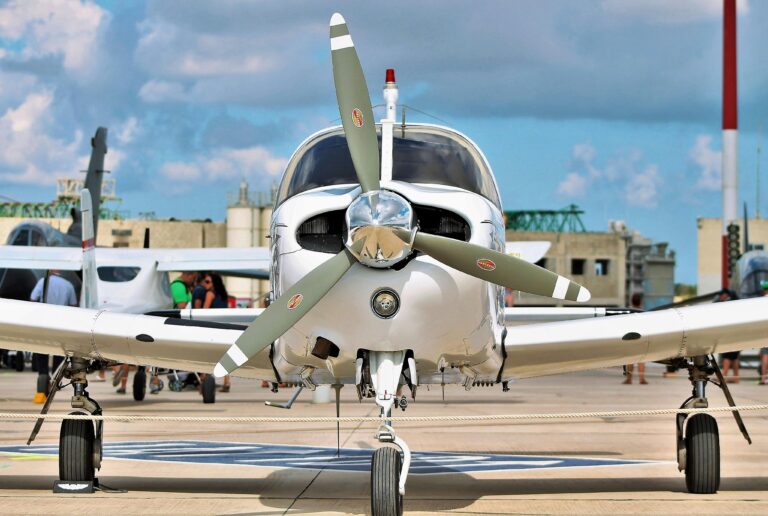10 Steps to Learn to Fly a Helicopter: A Beginner’s Guide
Are you ready to embark on an exciting journey to learn to fly a helicopter? Flying a helicopter is a unique and rewarding skill that requires focus, training, and determination. In this guide, we’ll take you through the 10 essential steps to get started as a beginner. Whether you’re pursuing a career as a pilot or fulfilling a personal dream, these steps will help you soar.
Step 1: Understand the Basics of Helicopter Flight
Before stepping into the cockpit, it’s crucial to learn how helicopters work. Helicopters operate differently from airplanes, relying on rotor systems for lift and control. Start by studying the key components, including:
- The rotor blades (for lift)
- The cyclic (for direction)
- The collective (for altitude)
- The anti-torque pedals (for stability)
This foundational knowledge will help you grasp the mechanics before your first lesson.
Step 2: Research Helicopter Training Schools
Choosing the right flight school is key to your success. Look for schools with certified instructors, modern helicopters, and positive reviews. Some of the top-rated options in the U.S. include:
Compare costs, locations, and available programs to find the best fit for your goals.
Step 3: Meet the Medical and Licensing Requirements
To fly a helicopter, you’ll need to pass a medical examination to ensure you’re fit for aviation. Additionally, you’ll need to obtain:
- A Student Pilot Certificate
- A Private Pilot Helicopter License (PPL-H)
- A Commercial Pilot License (CPL-H) if you aim to fly professionally.
The FAA sets these requirements in the U.S., but they may vary by country.
Step 4: Master the Helicopter Controls
Your first flight lessons will focus on understanding the controls:
- Cyclic: Controls direction (forward, backward, left, or right).
- Collective: Adjusts the rotor blades to control lift and altitude.
- Pedals: Control the tail rotor to manage yaw (rotation).
During this stage, you’ll practice hovering—a critical skill for precise landings and takeoffs.
Step 5: Practice Hovering and Basic Maneuvers
Hovering is one of the most challenging skills to master, but it’s fundamental for flying helicopters. Instructors often describe it as balancing on a needle. Be patient as you practice:
- Maintaining altitude without drifting.
- Adjusting for wind and weather conditions.
- Transitioning from a hover to forward flight smoothly.

Step 6: Learn Navigation and Airspace Rules
Helicopter pilots must understand navigation, weather patterns, and airspace regulations. As part of your training, you’ll learn to:
- Read aeronautical charts.
- Communicate with air traffic control.
- Plan safe flight routes.
Mastering these skills will keep you safe and confident in the air.
Step 7: Build Flight Hours with Solo Flights
Once you’ve developed core skills, you’ll progress to solo flights. This milestone is both thrilling and intimidating for beginners. It’s an opportunity to:
- Apply what you’ve learned independently.
- Log hours toward your PPL-H certification.
- Gain confidence in real-world scenarios.
You will be interested: How Much Does It Cost to Fly a Guimbal Cabri G2?
Step 8: Pass Your Helicopter Pilot Exams
To become certified, you’ll need to pass written, oral, and practical exams. These tests assess your knowledge of aviation theory, regulations, and piloting skills. Prepare thoroughly by:
- Reviewing your training materials.
- Practicing flight scenarios with your instructor.
- Taking mock exams to boost your confidence.
Step 9: Continue Learning with Advanced Training
After earning your private pilot license, consider additional certifications to expand your skills:
- Instrument Rating: Learn to fly in low-visibility conditions.
- Commercial License: Required for professional helicopter pilots.
- Flight Instructor Certification: For teaching future pilots.
Step 10: Fly Regularly to Stay Proficient
Flying helicopters requires consistent practice to maintain your skills. Even after completing your training, aim to log flight hours regularly. Join flying clubs or rent helicopters to keep honing your abilities.
Conclusion
Learning to fly a helicopter is an incredible journey that combines technical knowledge, hands-on practice, and personal growth. By following these 10 steps, you’ll be well on your way to mastering the art of helicopter piloting. Remember, persistence and patience are key—every flight brings you closer to your goal!






